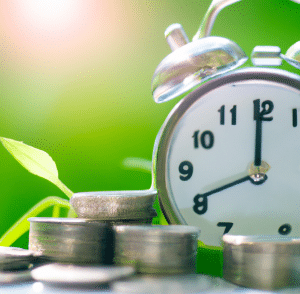Making informed decisions about flooring solutions involves not just evaluating their immediate costs, but also considering the long-term financial benefits they bring. Epoxy flooring, often chosen for its durability and aesthetic appeal, presents a compelling case when it comes to Return on Investment (ROI). By delving into the financial aspects of epoxy flooring, we can uncover how this investment can yield substantial returns over time.
 Longevity: The Gift of Time
Longevity: The Gift of Time
One of the most significant contributors to epoxy flooring’s ROI is its impressive longevity. Unlike some traditional flooring options that may require replacements every few years, epoxy’s robust nature means it can endure heavy foot traffic, impacts, and wear without showing signs of deterioration. This longevity translates to reduced replacement costs and minimized downtime for maintenance. Over the years, the upfront investment in epoxy pays off as you save on the recurring expenses associated with frequent replacements.
Low Maintenance Costs: Savings That Add Up
Epoxy flooring’s low maintenance requirements are another factor that contributes to its favorable ROI. The seamless and non-porous surface resists stains, dirt, and contaminants, making cleaning a breeze. Regular sweeping and occasional mopping are usually sufficient to keep epoxy floors looking pristine. The reduced need for specialized cleaning products and labor-intensive maintenance routines results in ongoing cost savings, which accumulate over time.
Potential Increase in Property Value: Enhancing Asset Worth
Investments in enhancing the aesthetic and functional qualities of a property often lead to an increase in its overall value. Epoxy flooring, with its visual appeal and durability, can significantly enhance the appeal of a space. Whether it’s a commercial establishment or a residential property, the presence of well-maintained and visually appealing epoxy floors can attract potential buyers and tenants. This increased demand can positively impact the property’s resale or rental value, providing a tangible ROI that reflects in its monetary worth.
and durability, can significantly enhance the appeal of a space. Whether it’s a commercial establishment or a residential property, the presence of well-maintained and visually appealing epoxy floors can attract potential buyers and tenants. This increased demand can positively impact the property’s resale or rental value, providing a tangible ROI that reflects in its monetary worth.
Cost Efficiency Over Time: Crunching the Numbers
While the upfront cost of epoxy installation may appear higher than some other options, it’s essential to consider the long-term financial benefits. By factoring in the extended lifespan, reduced maintenance expenses, and potential increase in property value, epoxy flooring’s cost-efficiency becomes evident. The cumulative savings in replacement costs, maintenance, and potential revenue from higher property values can far outweigh the initial investment.
Enhanced Business Operations: The Intangible ROI
For commercial spaces, the ROI of epoxy flooring extends beyond the financial realm. Enhanced aesthetics, improved safety, and increased employee satisfaction can contribute to more productive and efficient business operations. A visually appealing and functional environment can attract more customers, improve brand perception, and foster a positive atmosphere that resonates with clients and employees alike.
In conclusion, investing in epoxy flooring isn’t just about the immediate costs; it’s about recognizing the long-term financial benefits that can significantly impact your bottom line. From reduced replacement expenses and low maintenance costs to potential property value appreciation, epoxy flooring’s ROI is a compelling argument for its value as a strategic investment. As you weigh the financial aspects of flooring choices, consider epoxy’s ability to not only transform your space aesthetically but also provide a substantial and enduring return on your investment.


